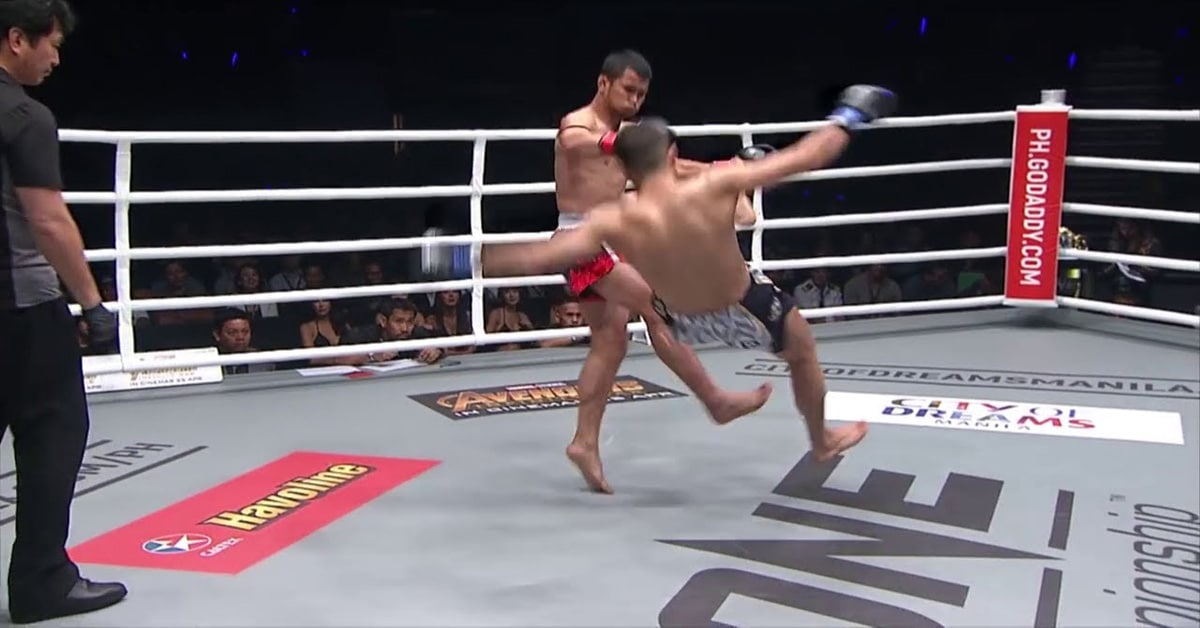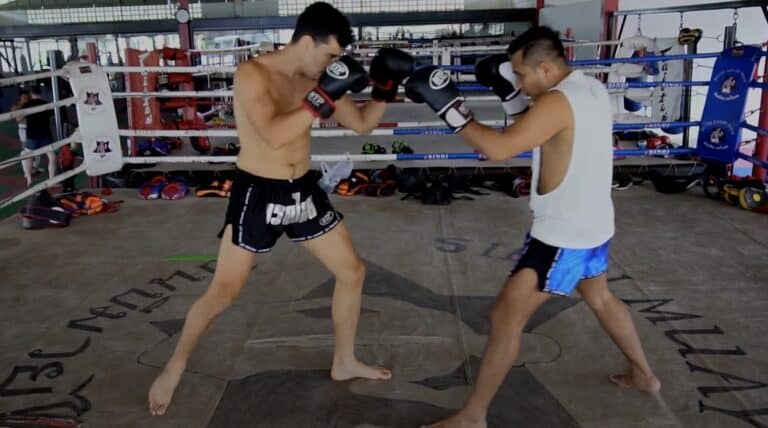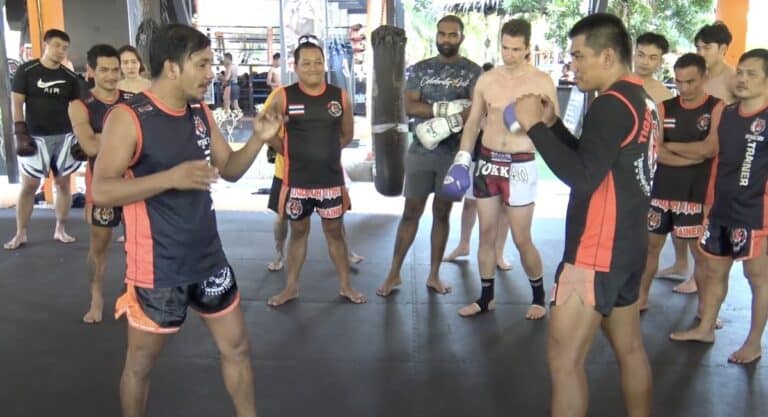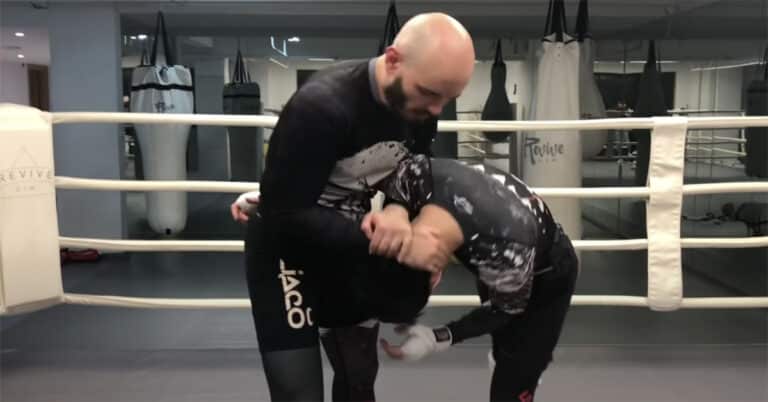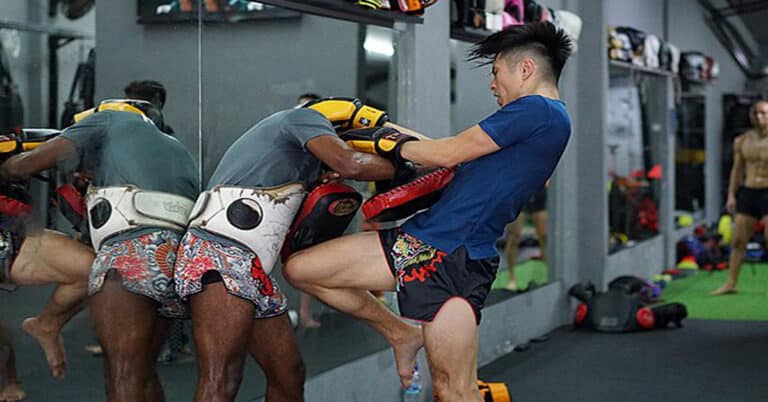Muay Thai Sweeps: Explained
In the world of Muay Thai, from local festival fights in the mountains of north Thailand and the incandescent stages and revered rings of Lumpinee and Rajadamnern and the highly lucrative global platform that is the One Championship Muay Thai technicians face off with calculated acts of violence and grand displays of heart. In this setting every move counts, with each fighter relying on their 8 limbs and years of consistent almost religious training to see them to victory.
Often overlooked when considering the sport is the Muay Thai sweep, which remains to this day one of the most important and highly appreciated displays of combat finesse in any Muay Thai arena. Muay Thai sweeps, while potentially viewed from an outsiders point of view as an unassuming or confusing move in the context of a “stand up” bout of combat, holds a pivotal role in the back and forth, ebb and flow of a Muay Thai fight.
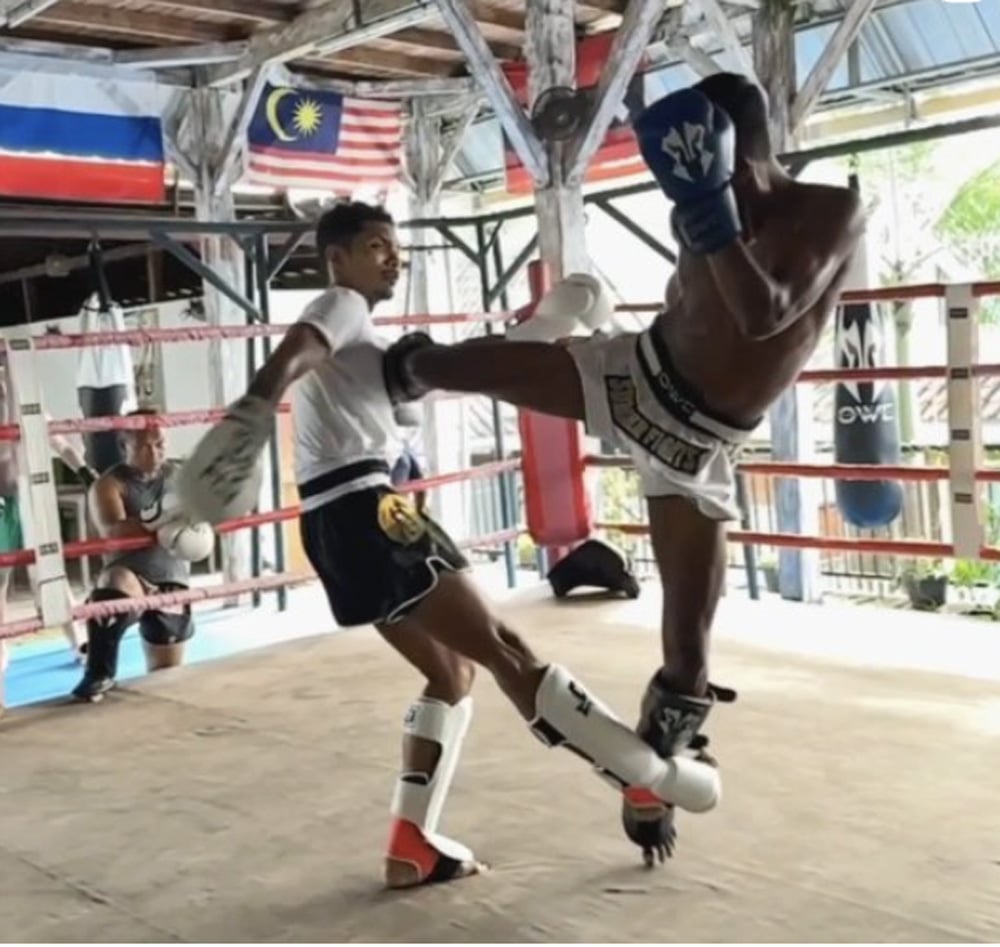
What are Muay Thai Sweeps?
The Muay Thai sweep is not as simple as a lead hook or rear roundhouse kick in the fact that it requires a number of different elements to come together in order for it to be successful, a perfect sweep will combine timing, momentum, technique as well as elements of misdirection to great effect.
The Sweep in its simplest implementation is a technique that will cause your opponent to lose balance and fall to the floor, now this sounds simple however as with anything in the sport of Muay Thai there is a depth of nuanced factors that will determine the effectiveness of the sweep and its value in the ring and on the judge’s score cards.
A typical sweep regardless of range, position, or implementation will typically involve moving the opponent’s lower body in one direction while simultaneously forcing their upper body in the opposite direction disrupting their balance and then causing them to lose their balance, with timing being the linchpin that will translate effort into reward. A well-executed sweep is often the result of split-second precision, taking advantage of an opponent’s weight distribution and exploiting their vulnerability.
In a Muay Thai bout sweeps often serve a dual purpose and are deployed accordingly, acting both as a shield and a sword, defensively the sweep is used to unbalance an oncoming attacker allowing the practitioner to create a means of escaping from an unfavorable situation, causing position to be reset as well as scoring heavily on the judges score cards.
Offensively it is used to in conjunction with feints to unbalance the opponent to create openings for follow up strikes or further clinch work where devastating knees can be landed, the versatility of the Muay Thai sweep is what makes them one of the most valuable tools available to a seasoned Muay Thai fighter.
Different Ranges for Sweeps
As previously mentioned the Muay Thai sweep encompass a wide range of engagement distance from kicking range to the clinch, with the effectiveness relying on timing and the ability to anticipate the opponent’s movements with a skilled Muay Thai fighter incorporating sweeps into their game in a myriad of different combat situations.
Kicking Range:
At kicking range much to the disdain of Muay Tae fighters (kick specialists), sweeps are often used in a defensive manner, the opponent launches a roundhouse kick which is typically checked or received, however, a skilled defensive fighter will time the kick stepping to the side moving with the strike to minimize damage and catch the leg under the arm locking the shin under the armpit, followed by an explosive lifting scoop of the rear leg while simultaneously lifting the captured leg leading the kicker to fall to the floor.
On the offensive side of kicking range, fighters may set up sweeps by feinting kicks to provoke a reaction from their opponent, often faking low to elicit a check response (raising of the lead leg to block the strike with the shin) seizing the opportunity to step in pushing the torso in one direction and scooping the load-bearing leg with their rear leg, for often devastatingly heavy falls to the mat.
Boxing Range:
At closer boxing ranges sweeps can be used when timing the lunging power punches of the opponent to shift weight under the outstretched arm pulling the opponent over the sweepers leg for a loss of balance, creating an opening for follow-up strikes. Offensively use sweeps in boxing range, fighters can use feints or continued barrages of punches to bait their opponent cover up guarding their heads when the opponent’s vision is obscured a well-timed switching of stances or step to the side combined with a quick sweep can catch them off guard and put them on the mat or set up a devastating knee or elbow.
Clinch Range:
Probably the most well-known distance for sweeps within the clinch, sweeps can be defensive tools to regain balance and control if an opponent is in a better position and raining down knees and elbows countering with a leg or foot sweep can shift the flow of momentum in the sweepers favor.
Offensively, fighters often set up Muay Thai sweeps in the clinch by holding the neck with one hand while controlling the inside of the arm between the front of the shoulder and bicep, they will step to one side, pulling the head down and lifting the arm with the other to disrupt balance, causing the opponent to fall to the floor or create an opportunistic space to deliver a strong knee to the ribs or face.
Using Feints to Set Up Sweeps:
Fighters particularly Muay Femur fighters will use feints in Muay Thai to create openings for sweeps. By rapidly shifting their hips mimicking the beginning movement of a kick, they can force their opponent to react by checking thin air or preparing to counter with a teep kick, and in that moment of reaction, they can execute a well-timed sweep.

Muay Thai Scoring
Understanding how sweeps are scored in Muay Thai is vital for both fighters and fans. Muay Thai Sweeps contribute significantly to a fighter’s overall score. While it is accepted that during a Muay Thai bout Kicks, Knees and elbows score far better than punches, sweeps fall into a category on their own due to their demonstration of control and dominance in the ring.
When a fighter executes a successful sweep the severity of the seep will play a large part on the scoring, should the opponent fall heavily onto the flat of their back then the scoring will reflect the devastating nature of the technique, however should it only disrupt the balance allowing for follow-up strikes this will score lower however will often be scored in conjunction with the following attacks for a substantial point gain. Finally in terms of scoring the matador-esque style of a successful sweep and it’s regularly accompanied showmanship will ignite the crowd which contributes to a strong lasting impression with the judges when scoring that round.
Muay Thai sweeps are as old if not older than the sport of Muay Thai with roots running as deep as the ancient techniques of Muay Boran, with practitioners from the golden age of Muay Thai to the current crop of skilled warriors utilising them to great effect, notable stand outs such as Pakorn PK Saenchai, Dany Bill and the legend Saenchai entertaining fans with their sweeps across the years, with lesser known fighters such as Eddie Farrell winning his WMC world championship against Parinya M.U Den via TKO as a result of a crushing sweep.
In the dynamic world of Muay Thai, the sweep stands as a testament to the art of 8 limbs multifaceted nature. It is a technique that embodies the perfect blend of strategy, timing, and technique. The blend of both balance and finesse is a symbol of mastery that distinguishes the great from the good In the world of Muay Thai, where contests are won through a series of calculated movements, the sweep takes center stage as a testament to the elegance, precision, and enduring spirit of this sport of beautiful violence.

